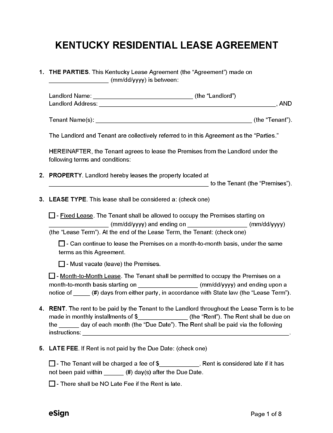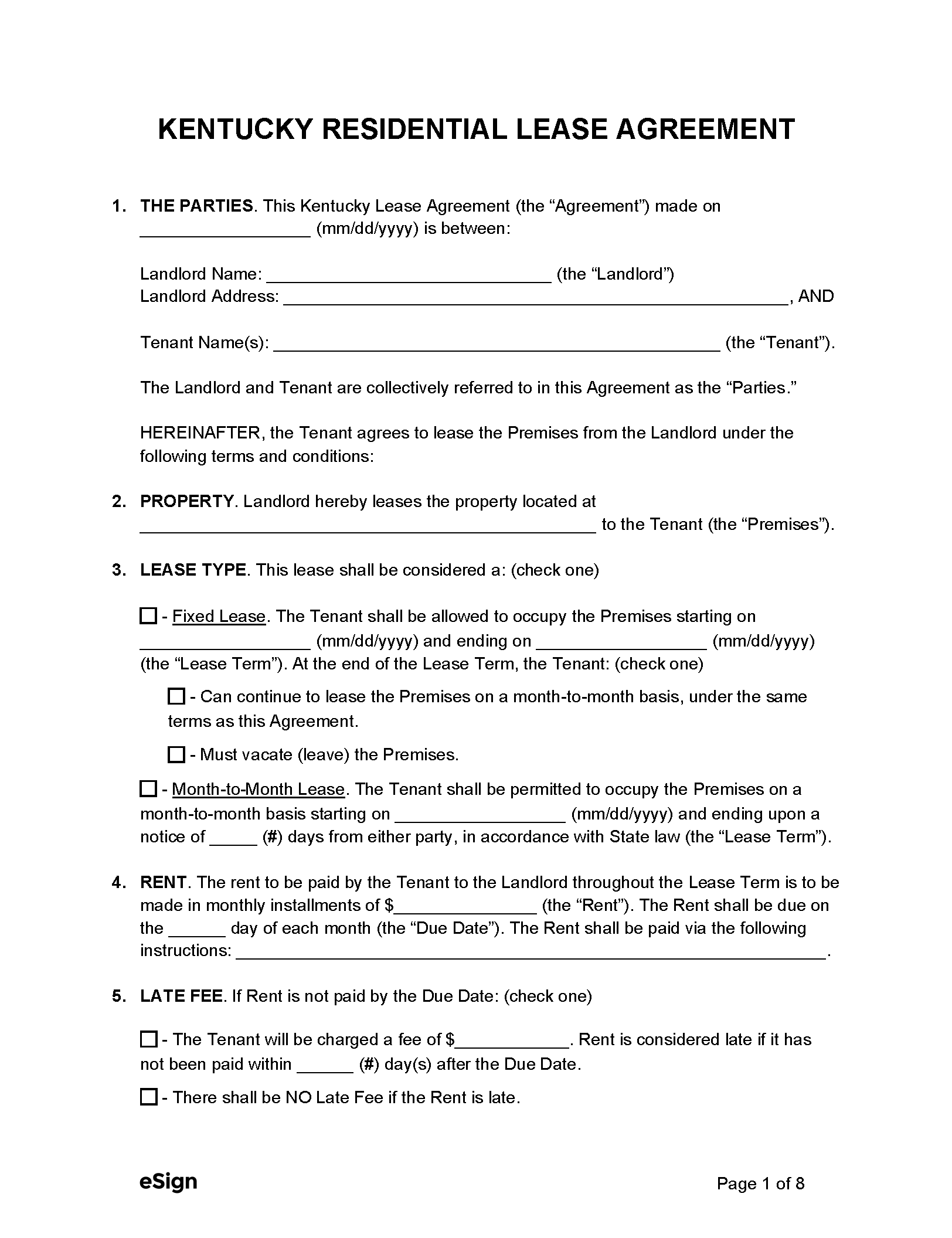Lease Agreements: By Type (6)
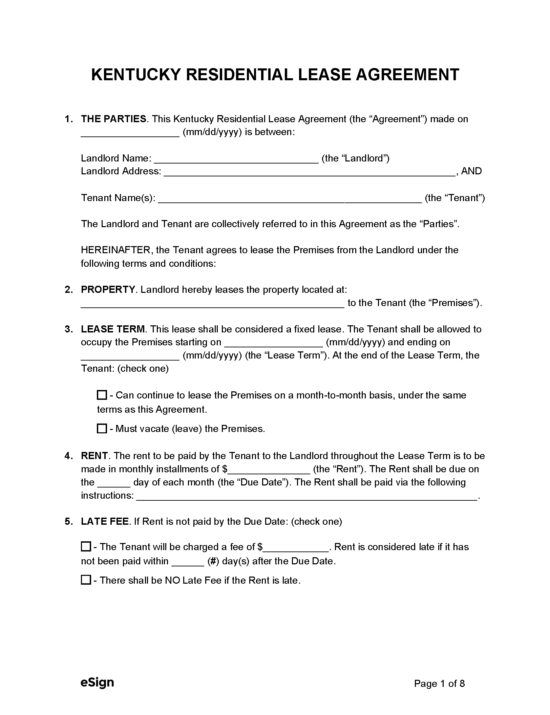 Standard (1-year) Lease Agreement – The most common lease agreement, this contract lasts for a fixed term of one year, usually with the option to renew. Standard (1-year) Lease Agreement – The most common lease agreement, this contract lasts for a fixed term of one year, usually with the option to renew.
Download: PDF, Word (.docx), OpenDocument |
Commercial Lease Agreement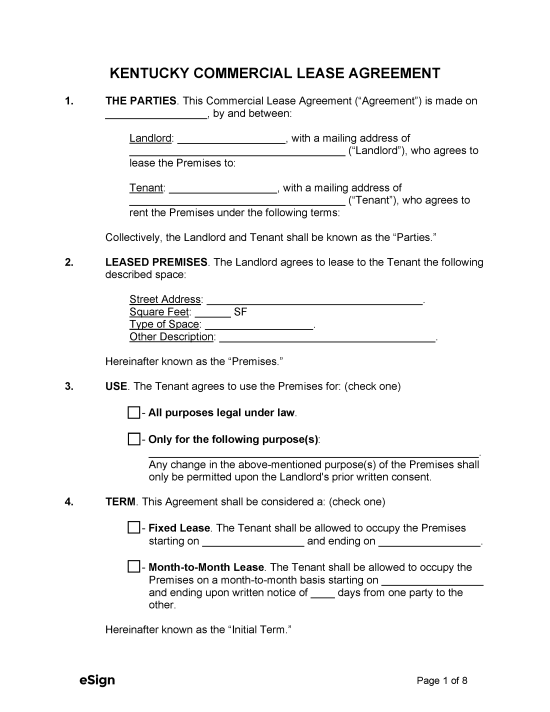 – An agreement for the rental of non-residential property. – An agreement for the rental of non-residential property.
Download: PDF, Word (.docx), OpenDocument |
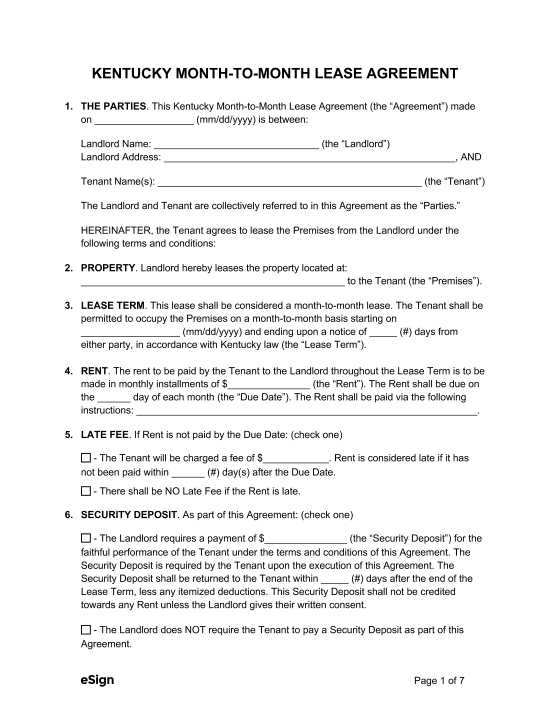 Month-to-Month Lease Agreement – A lease that renews monthly and has no termination date. Month-to-Month Lease Agreement – A lease that renews monthly and has no termination date.
Download: PDF, Word (.docx), OpenDocument |
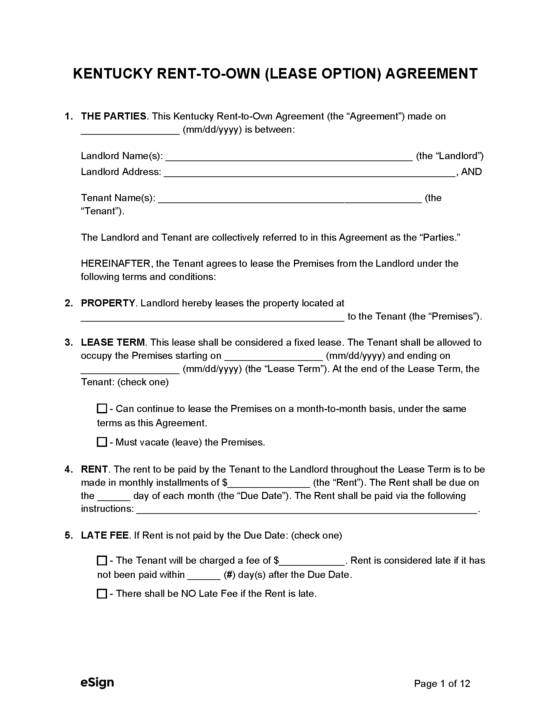 Rent-to-Own Agreement (Lease Option) – An agreement that, in addition to enabling the tenant to rent residential property, allows them to buy the residence under certain conditions. Rent-to-Own Agreement (Lease Option) – An agreement that, in addition to enabling the tenant to rent residential property, allows them to buy the residence under certain conditions.
Download: PDF, Word (.docx), OpenDocument |
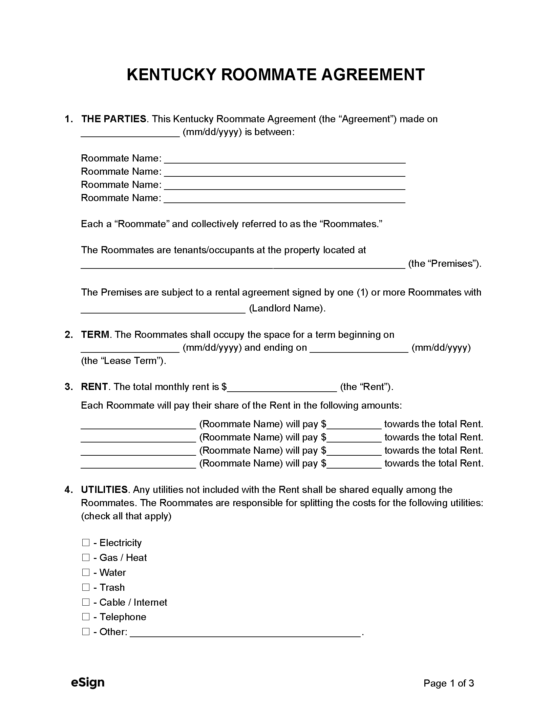 Roommate Agreement – A written arrangement between roommates that defines the house rules and each individual’s responsibilities. Roommate Agreement – A written arrangement between roommates that defines the house rules and each individual’s responsibilities.
Download: PDF, Word (.docx), OpenDocument |
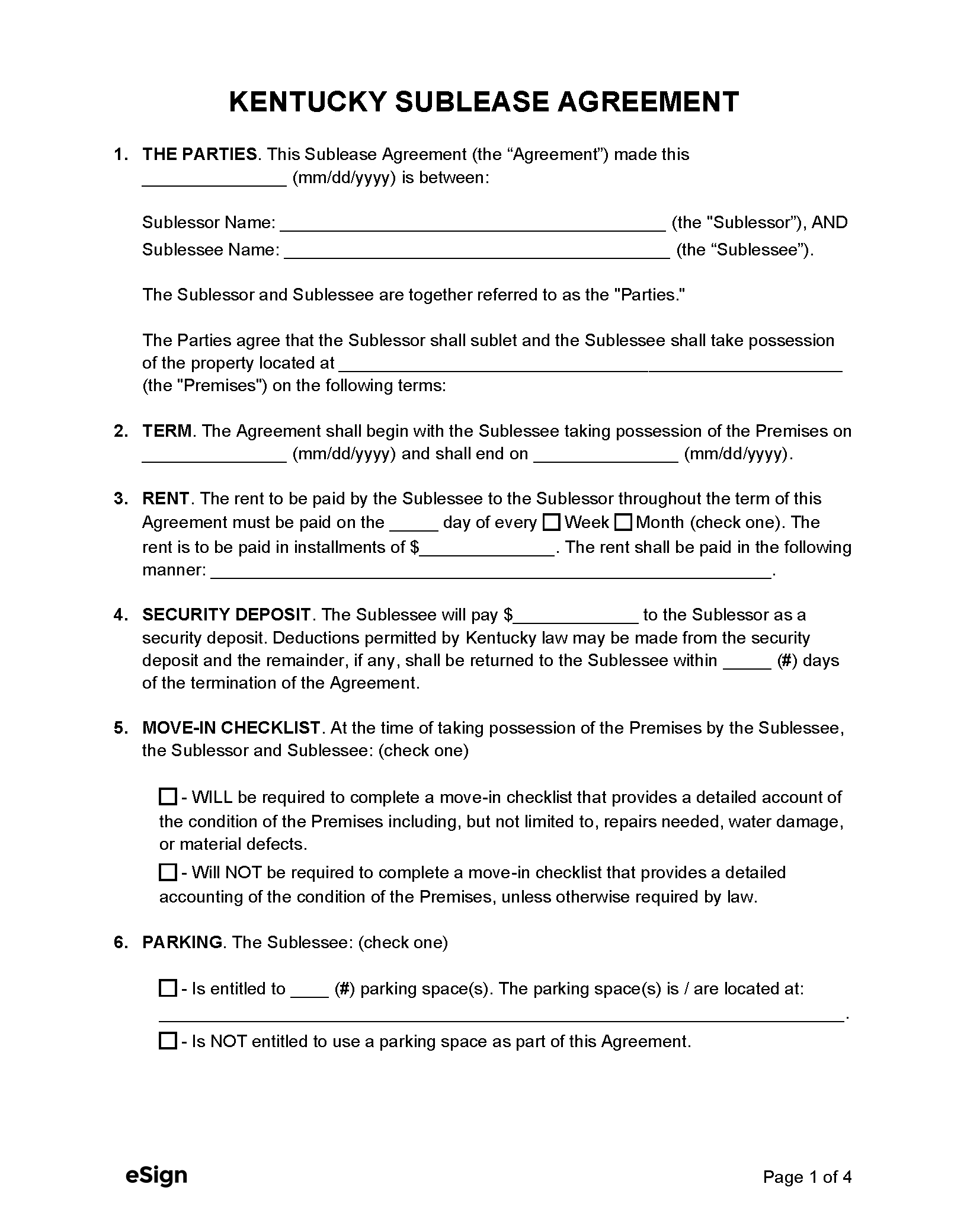 Sublease Agreement – With permission from the landlord, a tenant can use the sublease agreement to rent a portion of their rental property to a sublessee. Sublease Agreement – With permission from the landlord, a tenant can use the sublease agreement to rent a portion of their rental property to a sublessee.
Download: PDF, Word (.docx), OpenDocument |
Required Disclosures (4)
- Disclosure of Managers and Agents – The landlord must disclose the names and addresses of all managers and agents who will have access to the property and be authorized to receive and issue notices and demands.[1]
- Lead-Based Paint Disclosure (PDF) – Tenants must be given a written statement about the existence of toxic paint in their rental unit if it was built before 1978.[2]
- Move-in/Move-out Condition Checklist – If the landlord requires a security deposit from the tenant, they must make a full record of all existing damage on the property, which both parties must sign.[3]
- Security Deposit Disclosure – The landlord must keep security deposits in a bank account used for that sole purpose and disclose the bank name and account number to the tenant.[4]
Security Deposits
Maximum Amount ($) – There’s no limit to how much a landlord can demand for a deposit.
Collecting Interest – The landlord isn’t required to collect interest on security deposits.
Returning to Tenant – The tenant must collect their security deposit within 60 days of the tenancy’s end, or the landlord may take possession of the funds.[5]
Itemized List Required? – Yes, if any deductions are made to a security deposit, the landlord is required to provide a list of the damages and charges to the tenant.[6]
Separate Bank Account? – The landlord must place the security deposit in a bank account created solely for that purpose.
Landlord’s Access
General Access – For general access to the property, the landlord must provide the tenant with at least two days’ notice.[7]
Immediate Access – The landlord can access the property without notice in an emergency.[8]
Rent Payments
Grace Period – Landlords aren’t required to give a grace period for rent payments.[9]
Maximum Late Fees ($) – There’s no set limitation for fees that a landlord may charge for late rent.
Bad Check (NSF) Fee – Tenants may be charged a $50 fee for bounced checks.[10]
Withholding Rent –If the landlord fails to provide essential services and that failure threatens the tenant’s safety, the tenant, after notification, can carry out necessary repairs and withhold rent to recover the cost.[11]
Breaking a Lease
Non-Payment of Rent – Tenants who don’t pay their rent on time may be given seven days’ notice to pay the amount owed or quit the property.[12]
Non-Compliance – 14 days’ notice to cure or quit can be given to tenants who break the terms of their lease. For repeat violations, the tenant may be given 14 days’ notice to quit without the opportunity to remedy their non-compliance.[13]
Tenant’s Maintenance – If repairs are needed due to the tenant’s non-compliance, the landlord may give the tenant 14 days’ notice to remedy the situation, after which the landlord is legally able to make the repairs at the tenant’s expense.[14]
Lockouts – The landlord can’t take possession of a tenant’s rental unit by barring access or cutting off services.[15]
Leaving Before the End Date – If the lease requires the tenant to give seven days’ notice for extended absences and they fail to do so, the landlord can make them pay any legitimate damages.[16]
Lease Termination
Month-to-Month Tenancy – 30 days’ notice must be given before terminating a month-to-month lease.[17]
Unclaimed Property – There are no state laws regarding what a landlord should do with any belongings a tenant leaves after their lease is terminated.
